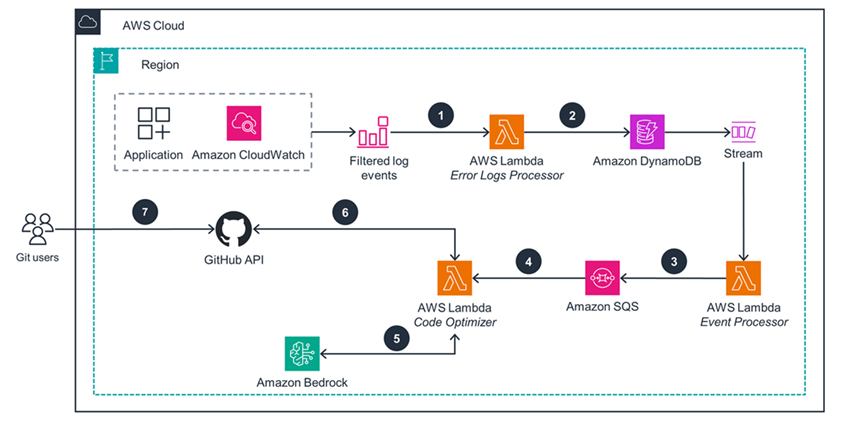Table of Contents
Introduction – Self-Healing Code
Imagine a world in which crashes fade into the past, software errors fix themselves, and bugs self-destruct. Science fiction, isn’t that right? However, because of the developing idea of self-healing code, this future might be closer than you think.
Understanding Self-Healing Code:
What precisely is self-healing code, then? It’s software that can recognize and fix issues on its own without assistance from a human. Consider it analogous to a biological organism capable of self-healing after injury. These “wounds” in the context of software could be anything from system failures to logical errors.
Fundamentally, it represents the proactive mentality of foreseeing probable malfunctions and devising immediate responses for them. In modern computing environments with distributed systems, cloud infrastructures, and microservices architectures, this proactive approach is essential.

Key Components of Self-Healing Code:
- Monitoring and Detection: Self-healing systems employ sophisticated monitoring mechanisms to continuously scrutinize various facets of software behavior. Through telemetry data, performance metrics, and anomaly detection algorithms, they discern deviations from expected norms indicative of potential issues.
- Diagnosis and Root Cause Analysis: Upon identifying anomalies or errors, self-healing mechanisms embark on a diagnostic journey to ascertain the root cause of the aberration. Leveraging techniques such as log analysis, event correlation, and dependency mapping, they strive to pinpoint the underlying issue accurately.
- Automated Remediation: Armed with insights into the root cause, self-healing systems initiate corrective actions autonomously. These actions may encompass a spectrum of interventions ranging from restarting failed services, rerouting traffic, scaling resources dynamically, to even modifying configurations on-the-fly.
Examples of Self-Healing Code in Action:
- Netflix Chaos Monkey: Netflix, the streaming giant renowned for its robust infrastructure, employs a tool called “Chaos Monkey” as part of its Simian Army suite. Chaos Monkey embodies the philosophy of controlled chaos by randomly terminating instances and inducing failures within Netflix’s production environment. This approach serves to validate the resilience of their systems, ensuring that failures are gracefully handled through redundancy and self-healing mechanisms.
- Google Borg System: Google’s internal cluster management system, known as Borg, exemplifies the power of self-healing at scale. Borg autonomously manages Google’s vast data centers, dynamically scheduling and reallocating resources to optimize performance and reliability. In the face of hardware failures or network disruptions, Borg orchestrates seamless failover and workload redistribution, thereby minimizing service disruptions and ensuring high availability.
- Amazon AWS Auto Scaling: Amazon Web Services (AWS) offers a suite of auto-scaling capabilities that epitomize the essence of self-healing infrastructure. With AWS Auto Scaling, organizations can define policies and thresholds for resource utilization. In response to fluctuating demand or instance failures, Auto Scaling automatically adjusts capacity by launching new instances, terminating underutilized ones, and distributing traffic evenly across the fleet, thus maintaining optimal performance and cost-efficiency.
Potential Benefits:
- Reduced downtime and improved reliability: No more scrambling to fix crashes or waiting for patches. Self-healing code can identify and address issues on the fly, minimizing disruptions and maintaining system uptime.expand_more
- Lower maintenance costs: Automating problem detection and repair can significantly reduce the need for manual intervention, freeing up developers for more strategic tasks.
- Enhanced security: Self-healing systems can be programmed to detect and respond to cyberattacks in real-time, reducing vulnerabilities and improving overall security posture.
- Increased adaptability: Code that can adjust and learn from its environment can remain relevant and functional even as circumstances change.
Set of Challenges:
- Complexity: Developing and implementing self-healing systems requires advanced expertise and can be resource-intensive.
- False positives and negatives: Mistakenly identifying issues or failing to detect real problems can lead to unintended consequences/exclamation
- Ethical considerations: Who is responsible for the actions of self-healing code, and what ethical boundaries need to be set?
Conclusion
In summary, The need for robust and flexible software systems has never been greater in a time of digital transformation and unrelenting innovation. Self-healing code gives software the ability to change, adapt, and overcome obstacles on its own—a paradigm shift in the conception, design, and use of software. Adopting the philosophy of self-healing code can help organizations navigate the complexity of today’s computing environments and open up new possibilities in terms of dependability, scalability, and customer satisfaction.
Are you excited about the possibilities of self-healing code? Do you have any concerns? Share your thoughts in the comments below!




Leave a Reply